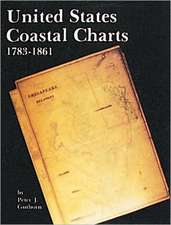Illustrating the Phaenomena: Celestial cartography in Antiquity and the Middle Ages
Autor Elly Dekkeren Limba Engleză Hardback – 24 oct 2012
Preț: 845.27 lei
Preț vechi: 1205.36 lei
-30% Nou
Puncte Express: 1268
Preț estimativ în valută:
161.79€ • 175.80$ • 135.99£
161.79€ • 175.80$ • 135.99£
Carte tipărită la comandă
Livrare economică 10-16 aprilie
Preluare comenzi: 021 569.72.76
Specificații
ISBN-13: 9780199609697
ISBN-10: 0199609691
Pagini: 478
Ilustrații: 170 b/w illustrations, 16pp colour plates
Dimensiuni: 201 x 254 x 29 mm
Greutate: 1.25 kg
Editura: OUP OXFORD
Colecția OUP Oxford
Locul publicării:Oxford, United Kingdom
ISBN-10: 0199609691
Pagini: 478
Ilustrații: 170 b/w illustrations, 16pp colour plates
Dimensiuni: 201 x 254 x 29 mm
Greutate: 1.25 kg
Editura: OUP OXFORD
Colecția OUP Oxford
Locul publicării:Oxford, United Kingdom
Recenzii
A book that will have many uses and a long life. It is beautifully illustrated, with numerous high-quality black-and-white photographs and eight color plates. Anyone interested in the representations of the heavens before the modern period will inevitably need to dip into this important book.
An impressive and thorough account of 16 extant celestial globes and 40 celestial maps â There is no doubt that Dekker's volume will become a standard reference book on globes and maps from Antiquity to the Middle Ages and will be the starting point for scholars who want to study such artifacts further. â Dekker has delivered a great piece of work on celestial cartography, which together with her study on Globes at Greenwich is bound to become a classic.
To sum up, the expositions are very thorough and are repleted with footnotes and appendices. The research that spans from Antiquity to Medieval Europe seems exhaustive ... kudos to the author for her generosity in providing the difficult-to-access photographs, including the colour plates, which would be most useful to serious readers.
...a splendid book that will be treasured by every serious student of the subject.
This impressive study is the first comprehensive history of ancient and medieval celestial globes and maps based on the artifacts, most of which Elly Dekker has examined directly. Its greatest virtue is to combine mathematical and theoretical expertise with a practical approach to its objects.
Behold! An astonishingly thorough account of how observers from ancient Greece to fifteenth-century Vienna and Nuremberg envisioned the star patterns. It is hard to imagine that any celestial globe or manuscript from this period has escaped Elly Dekker's meticulous sleuthing and analysis. The result is this admirable and beautifully illustrated tour de force of scholarship.
An impressive and thorough account of 16 extant celestial globes and 40 celestial maps â There is no doubt that Dekker's volume will become a standard reference book on globes and maps from Antiquity to the Middle Ages and will be the starting point for scholars who want to study such artifacts further. â Dekker has delivered a great piece of work on celestial cartography, which together with her study on Globes at Greenwich is bound to become a classic.
To sum up, the expositions are very thorough and are repleted with footnotes and appendices. The research that spans from Antiquity to Medieval Europe seems exhaustive ... kudos to the author for her generosity in providing the difficult-to-access photographs, including the colour plates, which would be most useful to serious readers.
...a splendid book that will be treasured by every serious student of the subject.
This impressive study is the first comprehensive history of ancient and medieval celestial globes and maps based on the artifacts, most of which Elly Dekker has examined directly. Its greatest virtue is to combine mathematical and theoretical expertise with a practical approach to its objects.
Behold! An astonishingly thorough account of how observers from ancient Greece to fifteenth-century Vienna and Nuremberg envisioned the star patterns. It is hard to imagine that any celestial globe or manuscript from this period has escaped Elly Dekker's meticulous sleuthing and analysis. The result is this admirable and beautifully illustrated tour de force of scholarship.
Notă biografică
Elly Dekker is an independent scholar studying the history of astronomy and of scientific instruments. She was awarded the Sackler Fellowship and the Caird medal for cataloguing the collection of globes and armillary spheres of the National Maritime Museum at Greenwich.





